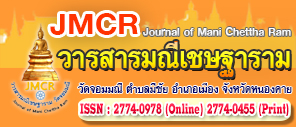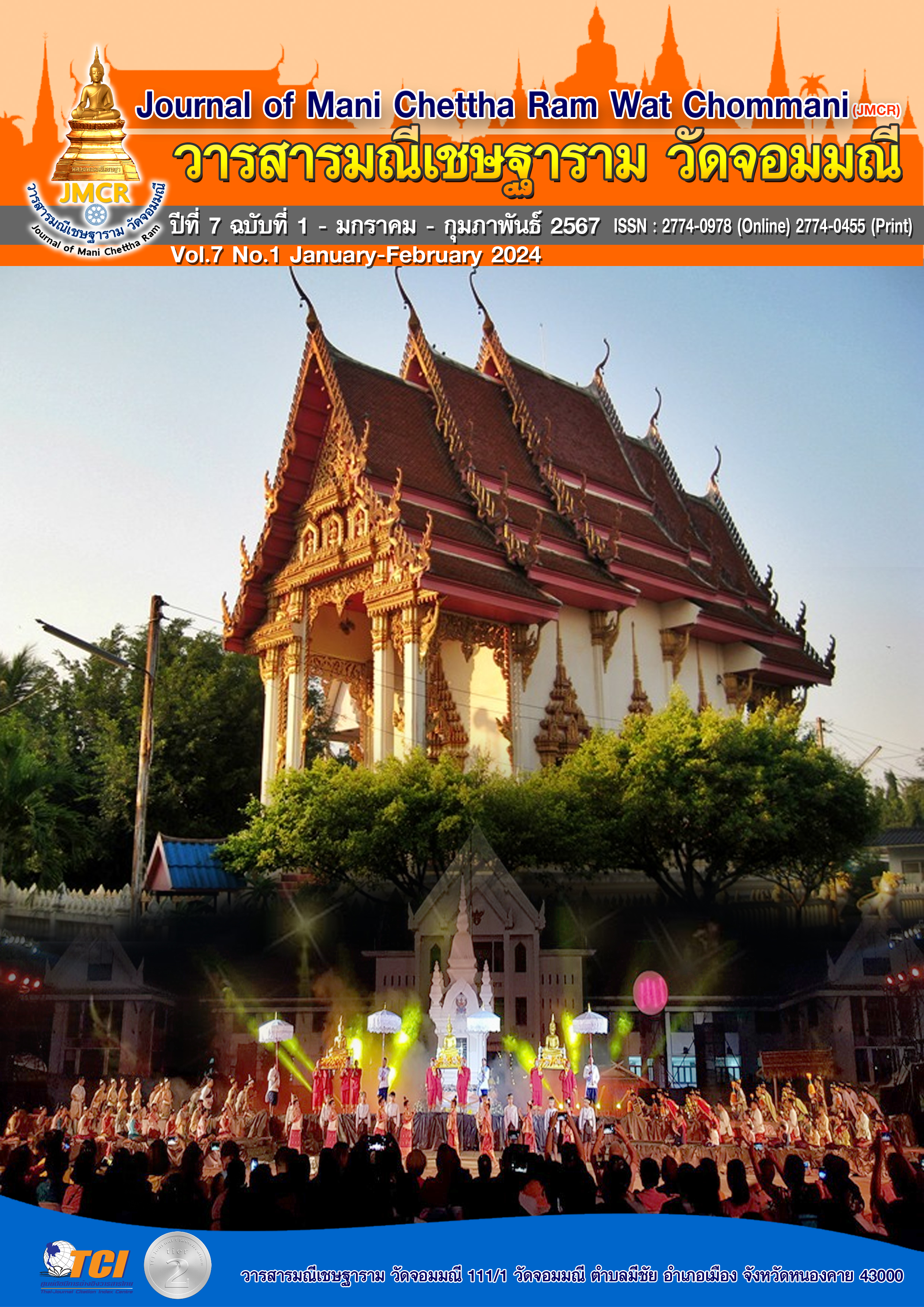THE DEVELOPMENT OF THE ENGLISH SPEAKING SKILL THROUGH CREATIVITY - BASED LEARNING APPROACH FOR LOCAL WISDOM KHAM DYE FABRIC VILLAGE PRODUCERS AT SAKON NAKHON PROVINCE
Keywords:
Creativity-Based Learning, English speaking ability, The local wisdom of Kham dyed fabricsAbstract
The research aims 1) to develop and find the efficiency of the creative-based learning concept to be effective according to the criteria of 75/75. 2) to create self-confidence in speaking English for villagers who produce local wisdom. 3) to survey the opinions of villagers who produce local wisdom. 4) to analyze the satisfaction of villagers who produce local wisdom.The target group consists of 30 local residents involved in the production of indigenous wisdom, Kham-dyed fabrics in Sakon Nakhon Province. This experimental research utilized a targeted sampling approach and various tools, including Case-Based Learning (CBL) lesson plans, pre- and post-learning assessments, sub-tests, and assessments of English speaking abilities and confidence. Feedback on English speaking ability development was also collected for analysis, employing percentages, means, and standard deviations to interpret the data.
The research findings are as follows: Upon completing the creative learning process, the villagers attained an average score of 77.77 in the sub-test, representing 77.77%. This indicates that the effectiveness of the process (E1) is 77.77%. The villagers exhibited high levels of confidence in their English speaking abilities. Students' feedback on the development of English speaking abilities through the creative base learning indicated that the lesson content was highly appropriate. The teaching techniques in CBL were highly suitable, as were the instructional media. In addition, instructors demonstrated highly proficient skills in managing learning, and the timing of classes was highly appropriate. The learning environment and facilities were also highly suitable. Overall, the development of English speaking abilities through the creative base learning approach was highly appropriate. The target group villagers expressed the highest level of overall satisfaction (Mean = 4.9, S.D. = 11.8), with satisfaction levels for each aspect also being the highest.
References
บัณฑิต ฉัตรวิโรจน์. (2558). ทักษะการสื่อสารภาษาอังกฤษ. เรียกใช้เมื่อ 22 มีนาคม 2566 จาก http://www.edu.nu.ac.th/researches/admin/upload/460311011114853is.pdf
สำนักวิชาการและมาตรฐานการศึกษา. (2558). ความสำคัญของการเรียนรู้ภาษาอังกฤษ. เรียกใช้เมื่อ 22 มีนาคม 2566 จาก http://www.cmruir.cmru.ac.th/bitstream/123456789
วันทนีย์ กองเขียว. (2552). รูปแบบการใช้ภาษาอังกฤษของบุคลากรในหอฝิ่น สามเหลี่ยมทองคำ อำเภอเชียงแสน จังหวัดเชียงราย. วิทยานิพนธ์ศิลปะศาสตร์มหาบัณฑิต, สาขาวิชาภาษาอังกฤษ, บัณฑิตวิทยาลัย, มหาวิทยาลัยราชภัฏเชียงราย.
สมหมาย อ่ำดอนกลอย. (2557). การจัดการศึกษาในศตวรรษที่ 21. เรียกใช้เมื่อ 25 มีนาคม 2566 จาก https://www.hu.ac.th/Conference/conference2022
ลัดดา ศิลาน้อย. (2558). การวิจัยพัฒนาทักษะการเรียนรู้ในศตวรรษที่ 21 และผลสัมฤทธิ์ทางการเรียน โดยใช้รูปแบบการสอนแบบสร้างสรรค์เป็นฐาน (CBL) ของนักเรียนชั้นมัธยมศึกษาปีที่ 1. ขอนแก่น : วารสารศึกษาศาสตร์ มหาวิทยาลัยขอนแก่น, 38(4), 141- 148.
วิริยะ ฤาชัยพานิชย์. (2558). การสอนแบบสร้างสรรค์เป็นฐาน Creativity Based Learning (CBL). กรุงเทพมหานคร: วารสารนวัตกรรมการเรียนรู้, 1(2), 23-37.
อนรรฆ สมพงษ์ และลดาวัลย์ มะลิไทย. (2560). การศึกษาการจัดการเรียนการสอนโดยวิธีการสอนแบบสร้างสรรค์เป็นฐานในรายวิชาการศึกษาเอกสารและหลักฐานทางประวัติศาสตร์. คณะครุศาสตร์ มหาวิทยาลัยราชภัฏสกลนคร.
Canale & Swain (1980). From communicative competence to communicative language Pedagogy. In J.C. Richard, & Richards & Schmidt R.W. (Eds.), Language and communication. (pp. 2-27). London: Longman.


